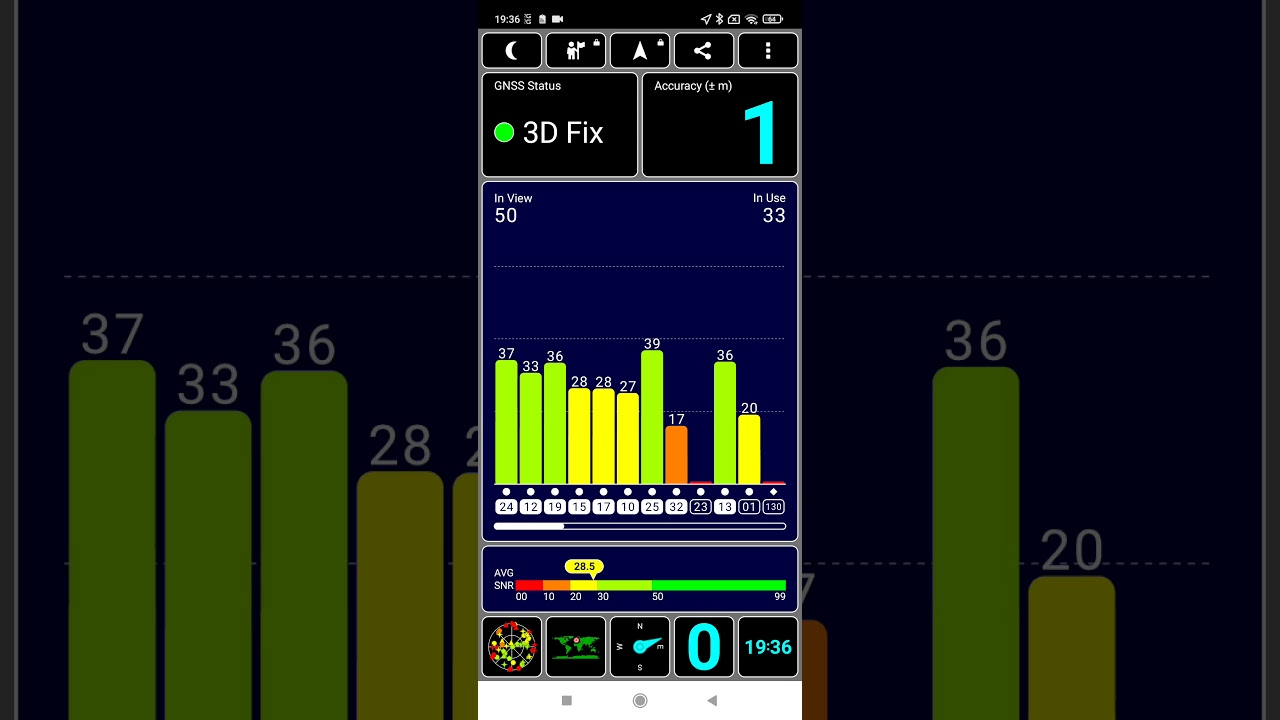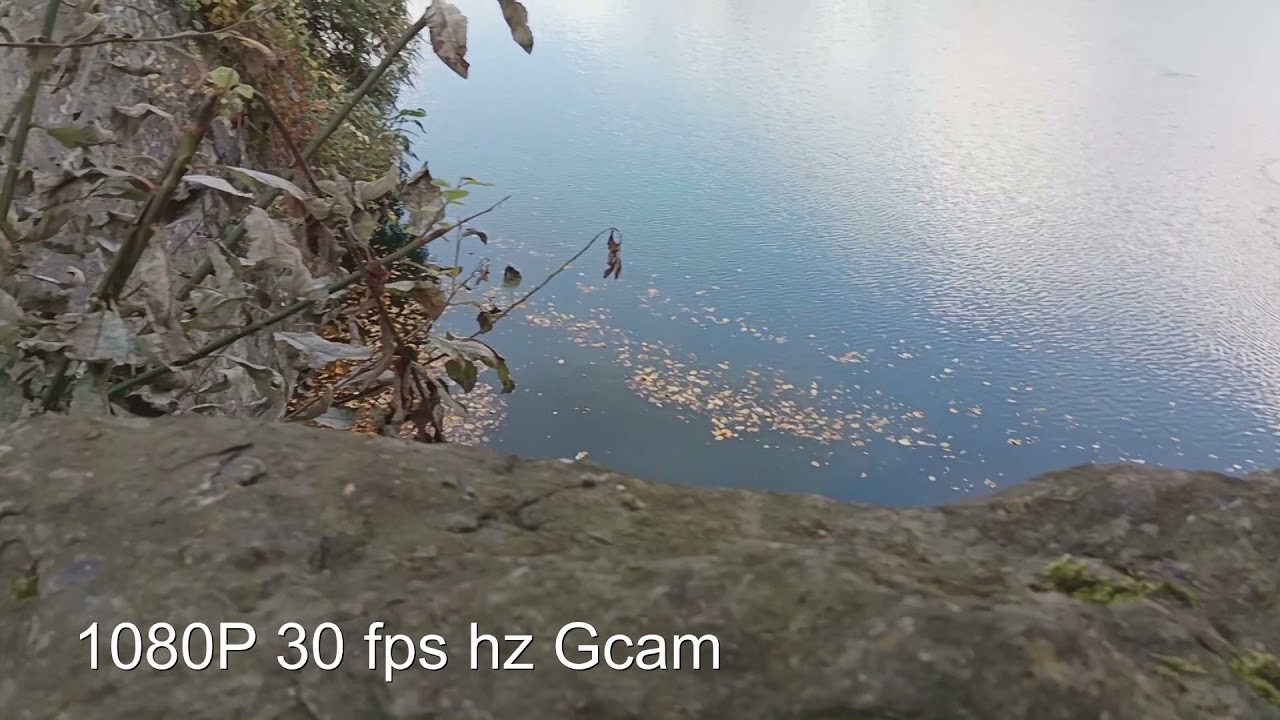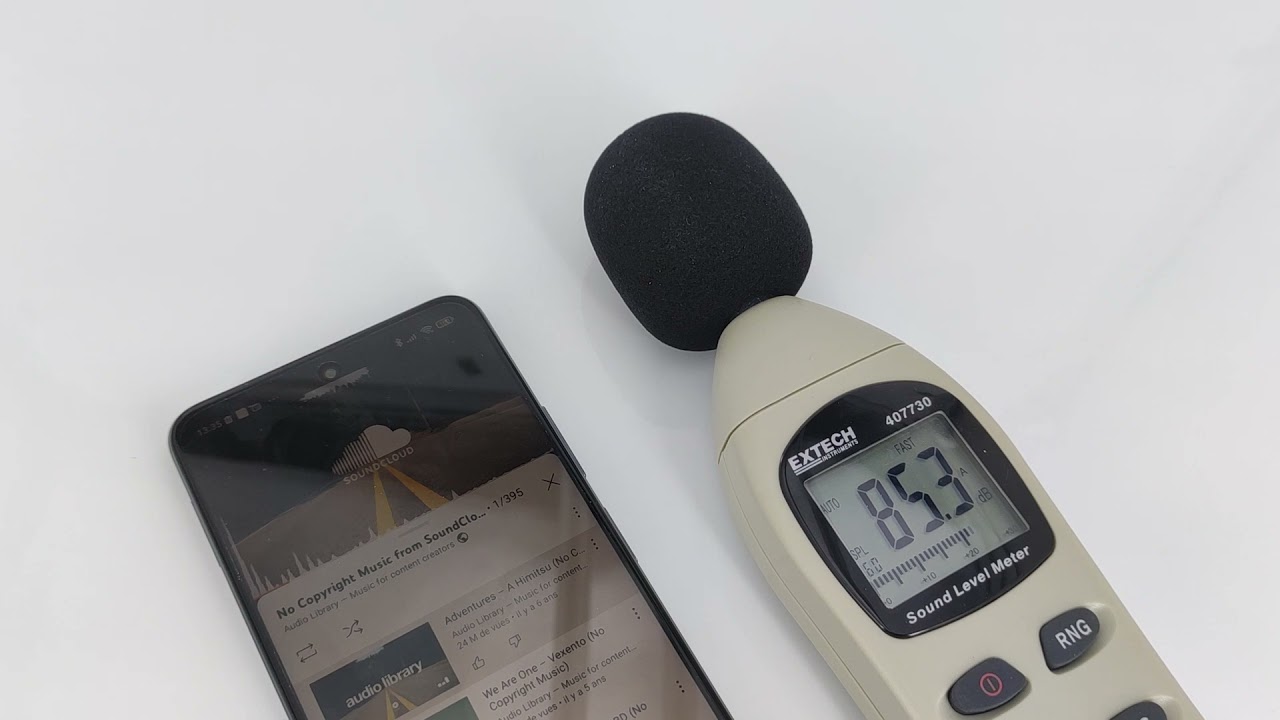Smartphones
Poco M4 Pro : test / review / price
Published on: 09-11-2021 / Modified: 11-12-2022
The return of the Poco brand in 2020 was followed by many models that have positioned themselves as the smartphones with the most interesting price / performance ratio. Each model has thus established itself in its price segment with a model exceeding the competition in terms of performance. The Poco range starts with the M range (which represents the entry level) with phones like the M3 or the M3 Pro, then there is the X range (which represents the mid-range) with phones like the X3 or the X3 Pro and there is finally the F range with for example the Poco F3 which represents the top of the Poco range. The Poco range is therefore much easier to understand than the Redmi or Mi range.
On the occasion of the big promotional day of November 11, Poco is launching a new model of the M range with the Poco M4 Pro 5G. This new phone is launched barely 6 months after the previous model (the Poco M3 Pro) and while taking the same basics, the Poco M4 Pro will push the limits of the entry level a little further. The Poco M4 Pro offers more performance, more memory, and a few other changes that I will detail in this review.
The Poco M4 Pro will launch on November 11, 2021 with a promo you shouldn't miss.
offer
The Poco M4 Pro will be available from 11/11/21 on the Poco Phone Store (Aliexpress) from 175 € (price depends on the chosen version and country):Poco M4 Pro / Poco Phone Store You can also get $ 15 coupon from this address: Poco Phone Store on Aliexpress
Manufacturer web site:
https://www.po.co/global/
Site where I have bought the Poco M4 Pro 5G:
https://s.zbanx.com/...
Structure of my tests
I test the phones according to a pre-established structure (see below) to provide you with as much information as possible. Unfortunately, this takes a long time. Some tests like network performance tests take several days and for photo tests I sometimes have to wait until the weather is suitable to take pictures in good conditions. I am therefore obliged to publish the tests step by step, so I invite you to come back if the test is not complete at the time of your visit.Price Poco M4 Pro 5G
The list below shows the prices for the Poco M4 Pro 5G from more than 50 sites around the world. If you are not satisfied with any price, you can subscribe to a price alert to be the first to be notified when the price drops.The above links are affiliate links from companies such as Amazon, Gearbest, Aliexpress,... If you appreciate my work, I would be grateful if you could purchase these products through these links. It costs you absolutely nothing but I get a small commission that allows me to buy the material I test. Thank you very much!
Timeline
11/02/2021: I was lucky enough to be loaned a Poco M4 Pro to be able to test it. Unfortunately, I will not have as much time as usual to take the test, but I will try to give you as much information as possible.Why this phone?
I have bought just about every Poco model that has been released since 2021 and so far Poco has never disappointed me. Poco has managed to establish itself as a benchmark in the market in a very short time, the miracle recipe is to offer maximum performance for the price. The Poco make performance more accessible and this performance is not intended only for gamers because the responsiveness of a phone is an important criterion for a very large audience.Price and performance are therefore two essential elements in choosing a Poco, but the advantages do not end there. The Poco M4 Pro is also equipped with an enduring 5000 mAh battery, it runs under a Mediatek architecture which often results in good performance at the GPS level. 5G is also supported, most European frequencies are available. The Poco M4 Pro is therefore a fairly complete phone and it can easily compete with other big, well-known brands.
Unpacking
The Poco box contains the phone, transparent cover, Poco stickers, manuals, needle for sim drawer, USB cable and charger. The contents of the box at Poco are very standardized, no more is needed anyway.
First configuration
The configuration of the Poco M4 Pro follows the same path as other phones using MIUI 12.5 except that for the Poco brand, all attempts to register for Xiaomi services have been withdrawn. The configuration procedure under MIUI 12.5 is more graphic and apart from a few screens imposed by Google, Poco / Xiaomi has managed to make these screens a little more pleasant.Finish
Poco brand phones have never been considered a benchmark in terms of exterior appearance or level of finish but I find that this Poco M4 Pro offers a good level of Finishing off for an entry-level phone, the phone has a very functional / practical look and it's quite successful.
Specifications
The information below comes from the Device Info HW application. The application provides detailed technical information about the tested phone. I tested the Poco M4 Pro in its 6Gb / 128 Gb version, you will find all the detailed characteristics in the following screens.
What I take away from these characteristics:
- the screen is the same as the Redmi 10
- Mediatek architecture (cpu / gpu), it should lead to good gps performance
- 90z screen
- Samsung SK5JN1 sensor like on the Redmi 10 but it seems to have slightly different characteristics
CPU / GPU Performance
The Poco M4 Pro runs on a Mediatek architecture for the CPU and GPU. The CPU is a MediaTek Dimensity 700, it is a priori the same as on the Poco M3 Pro but I see that the clock frequency is higher on the Poco M4 Pro. Poco are performance-oriented phones, even at the entry level. The Antutu test that will follow will give an idea of the in-game performance of this new Poco.
For the graphics part, the Poco M4 Pro is based on a Mali-G57 MC2 GPU, here on the other hand nothing new because this GPU was already present in the Poco M3 Pro.
Important note
This Poco should in principle use a Mediatek Dimensity 810 CPU and not 700 but for some reason mine was running on a Dimensity 700 while the 810 should be even more powerful. My test will therefore focus on the 700.
Benchmark Antutu/3DMark
I obtained a score of 295298 points with Antutu, this places the performance level of the Poco M4 Pro at the level of a Xiaomi Mi 11 Lite and it exceeds a whole series of entry or mid-range phones such as the Redmi Note 10 Pro. The Poco is where I expected it to be, it's an entry-level phone that tickles the performance of a mid-range phone. For example, it exceeds the Samsung Galaxy A52 when it costs significantly more.Gaming
To test the performance in game, I download the mobile PUBG game and evaluate the in-game experience, graphics level and depth of vision. This game is quite demanding and should help you evaluating the performance of a phone.

Network performance
The Poco M4 5G makes 5G more accessible to everyone, most European 5G frequencies are supported, so you should be able to use this Poco all over Europe.Signal 4G (from December 2020)
I decided to change the methodology for measuring the network because I noticed that the configuration of the mobile network changes over time. This makes it more difficult to compare phones because the conditions are no longer exactly the same.
To overcome this problem, I set up a device that captures 24 hours a day about ten parameters from the mobile network (ex: cell id, rssi, rsrq, snr, frequency,...). I then place the phone next to the device for 24 to 48 hours taking the same measurements so that I can compare them.
Overview of the phones tested with this methodology
I did not have the opportunity to take as many measurements as usual to assess the network performance of this phone but still managed to take 570 measurements and got an average signal of -96.78 dBm. With my probe I obtained an average signal of -93.71 dBm, so there is a difference of about 3 dBm, it is not a very important difference. The Poco therefore has good network sensitivity, it is located in the high average.
Download/Upload speed
To test the download speed, I have identified some 4G cells offering good performance where I test all my devices several times to see what download and upload speed they can achieve.
Wifi performance
To test a phone's ability to receive the network properly, I take measurements near my router and then remotely (and always at the same place). This gives me an average in dBm where a value of -90 dBm indicates poorer performance than a value at -30 dBm.Wifi signal
I measured a signal of -16 dbm near the router and -56 dBm at a distance. These measurements indicate good wifi sensitivity for this Poco.
Download/Upload speed
To test the speed in Wifi, I connect to my router in 2.4Ghz and 5Ghz (if available) and use the Ookla application to measure the speed.
GPS performance
To test the accuracy of the GPS signal, I use two positioning applications to evaluate the difference between the actual position and the position indicated by the phone. This test is done outdoors with nothing to obstruct the signal. An accuracy level of up to 3 meters can easily be corrected by an application (e.g. Google Maps).

Battery range
To test battery life I developed an application that measures the battery level minute by minute until the battery is empty. This application consumes about ten percent of the phone's resources and I do a test with 100 brightness. This test aims to reproduce a contemplative use of a phone (e.g. surfing the internet, reading articles, spending time on social networks). These results are not valid for intensive gaming/streaming use.With normal use, you should be able to last two to three days with a fully charged battery.
Photo camera test
To test the quality of photos produced by a phone, I do a technical test (resolution, sharpness, chromatic aberration,...) in studio (identical conditions) to evaluate the technical part objectively. From the second half of 2020, I built my own laboratory to take completely objective technical measurements. I then take pictures in real conditions to see how the camera performs. I then evaluate these photos according to my criteria but I publish the photos so that you can evaluate the result according to your criteria.Hardware
The Poco M4 Pro is equipped with a Samsung S5KJN1 main sensor that is also found on the Redmi 10, I note however some differences in the technical information of the sensor. The Redmi 10 did not dazzle me with its performance, I hope the Poco has managed to correct the situation with better image processing. The Samsung sensor is accompanied by a Sony IMX 355 ultra wide angle sensor, this sensor is present in almost all models of the Poco or Xiaomi range.Gcam works on the Poco M4 Pro, so I will be able to compare the optimization of the Google application against the Xiaomi photo application. If the sensor is bad, Gcam will not be able to produce good photos, but if the sensor is not well optimized, Gcam can sometimes improve the quality of the photos.
Photo quality
Photo quality (indoor/studio)
The studio test is carried out under the same conditions so that the results can be compared on an equal basis. I calibrate my lighting for each test to obtain the same brightness and colour temperature. This test is a preliminary analysis of the technical qualities of a camera. Most phones fail this test, so you should also read the results of the other tests in the following paragraphs.
Main sensor: Samsung S5KJN1
Ultra wide angle sensor: Sony IMX 355
Photo: technical test
I was inspired by industrial technical tests to create my own technical test to evaluate the technical quality of a camera. This test is an objective assessment of a camera's ability to render a scene correctly.
I test the following elements:
- centre sharpness, peripheral sharpness
- colour fidelity based on 24 reference colours
- level of chromatic aberration
- dynamic range (ability to capture dark and light areas without loss)
- distortion
The technical evaluation may differ from the subjective evaluation as the feeling of a photo will be influenced by the processing provided by each manufacturer.
Main sensor: Samsung S5KJN1
Ultra wide angle sensor: Sony IMX 355
Outdoor photo quality
Main sensor: Samsung S5KJN1
The Google Gcam photo application works on the Poco M4 Pro, it is quite slow in use but allows you to take photos with a sometimes more extensive rendering than 'with Poco's default photo app. I will therefore take the opportunity to compare the rendering of the two applications.
Poco photo application:
Gcam photo application:
Poco photo app in RAW mode and correction:
In the following photos, you will find photos taken in several places in sometimes a little different conditions. When you see several photos of the same place, it means that I have tested the AI, HDR or night mode. As a whole this Samsung sensor is able to produce correct photos when the light is good, but as soon as the light drops, the photos are too dark and the colors take on a brownish tint. The sharpness also varies greatly depending on the light conditions. These photos somewhat confirm the technical verdict where we will classify the Poco M4 Pro in the average of this price bracket for photo quality. Gcam allows you to recover certain details from photos, but Gcam does not solve everything.
Secondary sensor: Sony IMX 355
Test photo / night
Not yet available / tested
Video quality
Stabilisation

Video normale conditions

The exposure jumps are quite noticeable, the fluidity is not always excellent and the focus takes time to adapt to the movement. These are pretty common things for entry-level sensors, so the Poco M4 Pro isn't a video champion but it's far from the worst.
Video low light
Not yet available / tested
External audio quality
This test is intended to give you an overview of the volume and sound quality during calls and when listening to music through the external speakers.

External speaker test
The Poco M4 Pro is equipped with two external speakers, one above and one below the phone. These speakers can produce moderately powerful sound where highs are predominant. I got values above 80 decibels for the peaks of the soundtrack used, it is a normal volume in this price category.
Volume / call quality test
The volume of the listening speaker is a little below average, I reach 50 decibels without using the speaker. The sound quality is quite correct on the other hand. If I use the loudspeaker to receive a call, the volume rises considerably, sometimes exceeding 70 decibels. Here too the sound quality is quite acceptable although it is very focused on the treble.
Audio quality (headphones)
To test the quality of the phone's audio output, I connect the device's audio output to a measuring tool, then play sounds on all frequencies and measure the differences between the original sound and the sound produced by the phone. In this way I measure the phone's ability to correctly reproduce all sounds.Analysis of the sound produced by the Poco M4 Pro via the output jack shows that the Poco M4 Pro covers most frequencies correctly, it presents a slight deviation in the highs which move away from the reference from 10khz. I think the Poco M4 Pro uses the exact same hardware as the Poco M3 Pro because I got the exact same results. The sound produced by the Poco M4 Pro is of good quality on all frequencies, it cannot compete with high-end phones but that is not its vocation anyway.
Screen quality
To test the screen, I use a colorimetric probe that measures the color accuracy of a screen, as well as other parameters to see if a screen is able to correctly reproduce an image. I also test the brightness level to determine if the screen will be able to display an image in full sunlight.Colorimetry
Brightness / Contrast
The screen of the Poco M4 Pro is not very bright in its factory configuration. You have to activate the sun mode to increase the brightness. I measured a brightness of 398 cd / m² with my probe and with this level of brightness the readability of the screen should be good in just about all conditions except bright sunshine. Ideally, more than 500 cd / m² are needed for the screen to be perfectly readable under the sun.
I measured a contrast ratio of 1174: 1 with my probe, it is an average value for this kind of screen. The Poco M4 Pro is equipped with an IPS LCD screen, it would have had to be equipped with an Amoled screen to achieve really high contrast.
Biometry
The Poco M4 Pro uses a fingerprint sensor on the side, this sensor works great like most Poco / Xiaomi models. 2D facial recognition is also available.Operating system
The Poco M4 Pro runs under MIUI 12.5 out of the box, this version offers a more graphical experience for the configuration and brings some improvements compared to the previous version such as the possibility of using its phone as a desktop computer like Samsung Dex , the operating system is also lighter and consumes less power. It is also possible to install apps in a sandbox if you have doubts about the security level of an app.
MIUI also comes with a whole series of unwanted apps, these apps are completely harmless, just ignore them but they cannot be uninstalled. These apps never really bothered me but I know they irritate some users. The advertisement is also present with for example the security scan which is launched with each installation of new applications, these advertisements can be deactivated in the settings.
Encoutered bugs
Not yet available / testedAccessories Poco M4 Pro 5G
Compare Poco M4 Pro 5G with the others
Test / Review conclusion
The Poco M4 Pro is exactly where I expected it to be, offering some of the best price / performance ratio without having to make too many concessions on everything else. It takes the basics of what we find in other phones in the same price range but rises in mass with its performance. Is this phone only going to be useful for gamers? No, clearly not, the performance will provide everyday comfort for everyone and the other specificities of the phone will meet the expectations of a wider audience.
In addition to performance, this Poco M4 Pro has other qualities. For example, it is equipped with a 90 Hertz screen with almost perfect colorimetry if the configuration is adapted (see description / video). It has good wifi sensitivity and allows downloading at very high speed. The battery offers good autonomy with a relatively fast charge.
It's on the photo part where I'm a little disappointed because even if it is able to take correct photos when the light is good, it is quickly put in difficulty when the light is less good. The photos are then too dark and lack detail.
Poco has succeeded again, even the main brand Xiaomi can not do better in the fight for the first place in the price / performance ratio.
Strengths
Performance CPU / GPU
Colorimetric screen
Fast charge
Screen 90Hz
Sensitivity and speed wifi
Fast GPS fix
Weaknesses
Medium quality photo
Screen brightness
Alternatives to this product
The Poco M3 Pro represents a slightly less powerful alternative to the Poco M4 Pro. If performance is not an important criterion, the Redmi Note 10 will be the best alternative.
 LAURENT WILLEN
LAURENT WILLENHead of myself on this blog
I share my passions on my blog in my free time since 2006, I prefer that to watching nonsense on TV or on social networks. I work alone, I am undoubtedly one of the last survivors of the world of blogs and personal sites.
My speciality? Digital in all its forms. I have spent the last 25 years working for multinationals where I managed digital teams and generated revenues of over €500 million per year. I have expertise in telecoms, media, aviation, travel and tourism.












































Questions/Comments